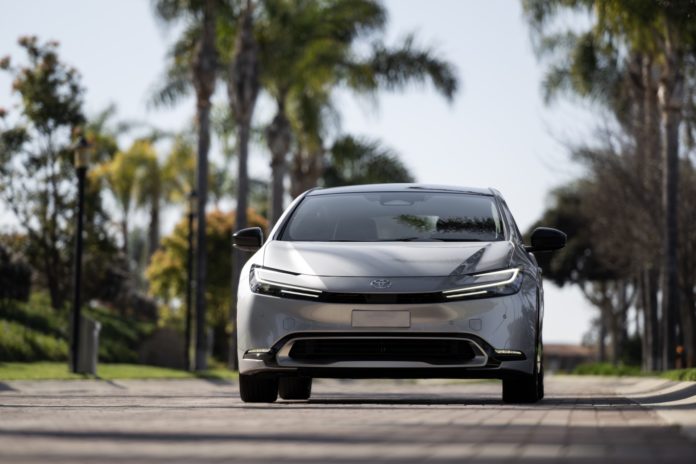The 2023 Toyota Prius Prime is a plug-in hybrid version of the conventional 2023 Prius hybrid launched earlier this year. It shares that car’s striking new shape, the one that wowed reviewers and shoppers.
The Prime adds a much larger battery that can be plugged into the grid to recharge—giving it an estimated EPA combined electric range of up to 44 miles for the base SE grade, or 39 miles for higher-level (and heavier) XSE and XSE Premium trims. It’s rated at 51 mpg combined in hybrid mode with a depleted battery for the SE model, 47 mpg for the XSE and XSE Premium—less than the conventional hybrid, which has ratings from 49 to 57 mpg.
It’s a stealth EV, unlike its visually distinct previous generation. Thirty-five to 40 miles is a useful all-electric range, and the more powerful electric motors—rated at 120 kw (161 hp)—let it keep up in rapid traffic without requiring a gentle foot on the accelerator to avoid triggering the engine. That 2.0-liter engine is rated at 150 hp, but unlike the conventional hybrid, optional all-wheel drive is not available.
2023 Toyota Prius Prime
Toyota will sell all the new-generation Prius Primes it needs to stay compliant with state and federal emissions and zero-emission vehicle sales requirements. How adept its salespeople are at explaining plug-in hybrids to shoppers newly attracted to the Prius by its good looks remains to be seen.
But the bigger question yet is whether Toyota’s new Prius Prime surpasses what remains the most competent and appealing compact plug-in hybrid passenger car: the second-generation 2016-2019 Chevrolet Volt, launched more than seven years ago with a 53-mile EPA range. The Volt was killed in 2019 by General Motors as it prepared for a future of Ultium battery-electric vehicles—for which we’re still mostly waiting.
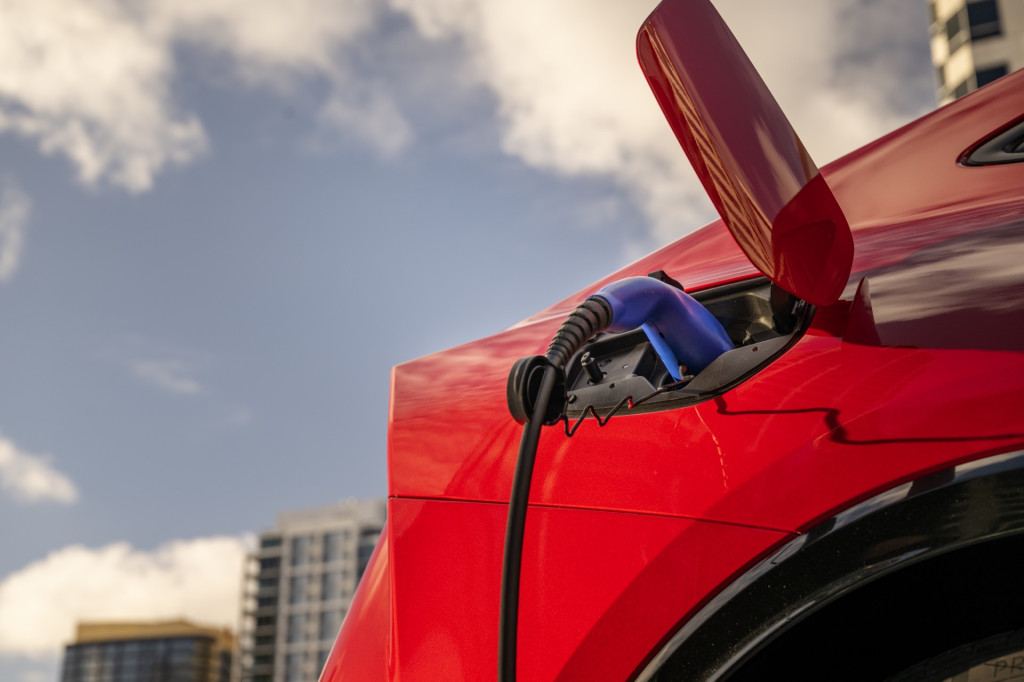
2023 Toyota Prius Prime
Prius plug-in hybrid history
The new Prime is actually the third generation of Prius to be offered with a plug. The 2012-15 Prius Plug-In Hybrid had a 4.4-kwh battery pack, just large enough to qualify it for a federal tax credit, and a measly 11 miles of EPA-rated range—though its electric-only power was so low the engine had to switch on at 6 miles, halfway through the EPA’s easygoing test cycle.
Then came the 2017 Prius Prime, visually quite distinct from its conventional-hybrid sibling, with 8.8 kwh giving 25 miles of range. Commendably, it operated as an EV only as long as the battery had more charge in it than the conventional hybrid version. Now we have the new 2023 Prius Prime, with a 13.6-kwh battery giving ranges of 39 to 44 miles, arriving at dealerships in May.
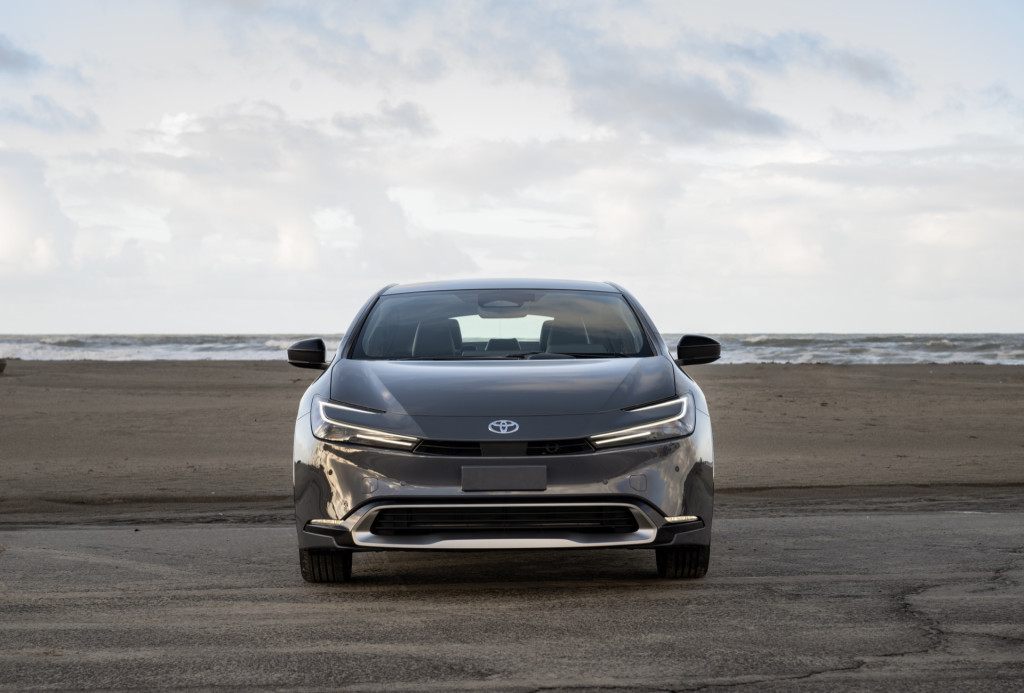
2023 Toyota Prius Prime
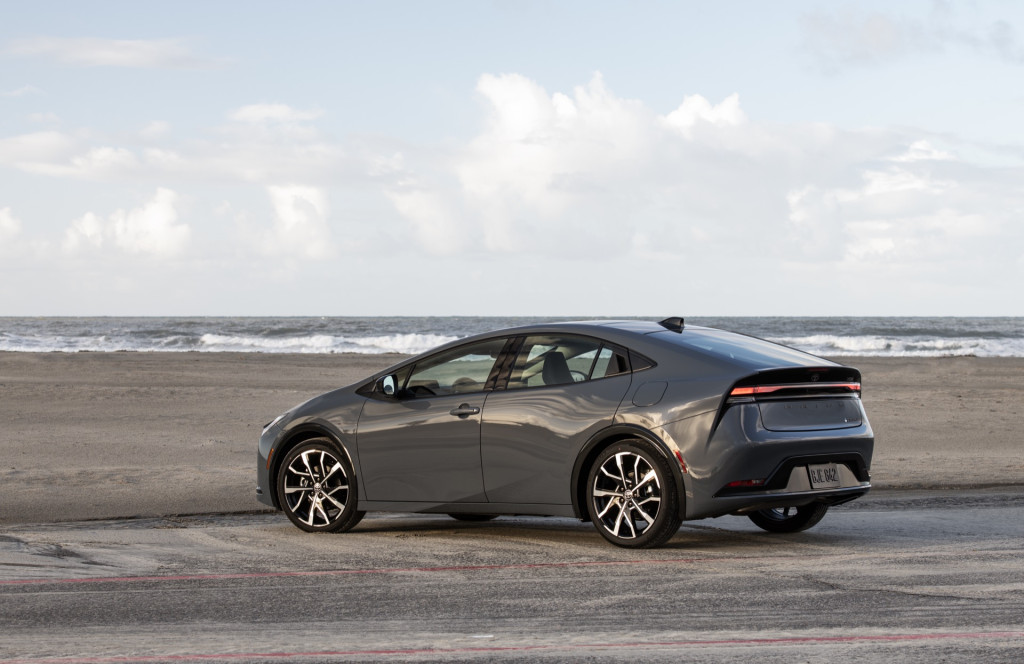
2023 Toyota Prius Prime
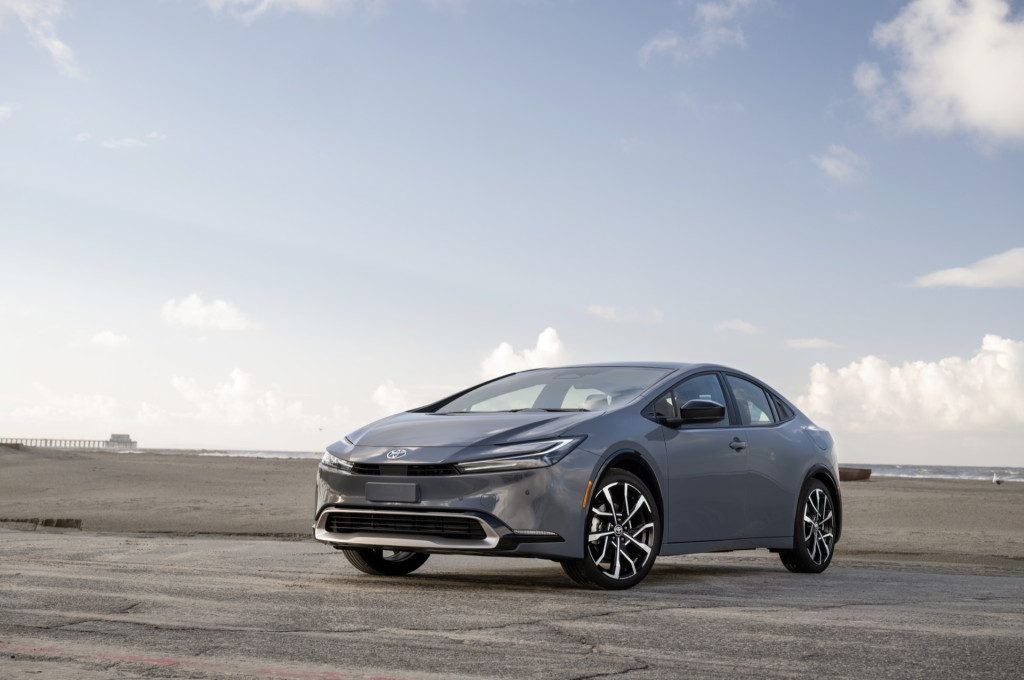
2023 Toyota Prius Prime
Prius Prime design and styling
While the old Prius Prime had many design differences from its plain old hybrid sibling—whose looks did not receive good reviews, to put it charitably—the new one is all but identical to the regular hybrid version. Prius aficionados will notice the charge-port door on the right rear flank, different wheel designs, and a slightly different front lower molding. That’s it.
The lack of differentiation was deliberate, Toyota execs told Green Car Reports. The idea was to place the Prime version at the top of the Prius model range, rather than trying to make it a separate and distinct model as the previous one had been.
Given the low volumes projected, that seems sensible. Toyota says volume for its first year of the new Prius will be 30,000, with Primes representing 30 percent of that, or up to 10,000. For the full 2024 year, it expects those numbers to rise to 50,000 and 15,000. Given that 240,000 Priuses in four different models were sold ten years ago, that’s a bit of a comedown.
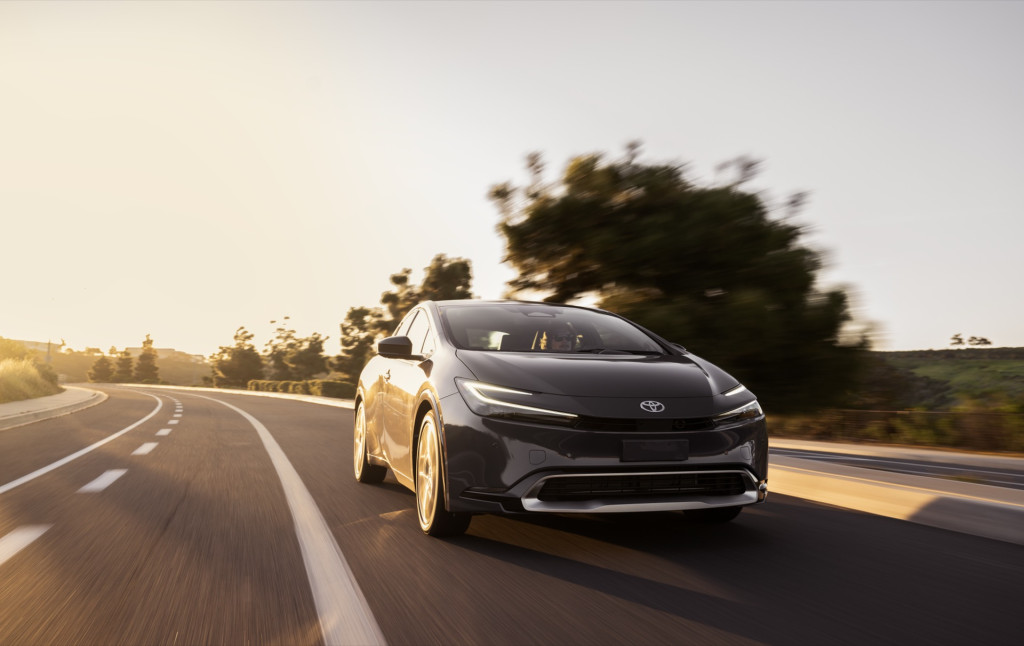
2023 Toyota Prius Prime
We drove two Prius Primes in and around the San Diego suburb of Carlsbad. One was a top-trim XSE Premium, while the other was a mid-level XSE. Both were estimated at 39 miles of combined EPA range, but given the range of driving modes, acceleration tests, and other driving variations, we couldn’t ascertain whether that number was reasonable. Experience with the previous generation Prime suggests it probably is.
Prius Prime EV acceleration: enough to shock a truck bro
On the road, electric-mode acceleration was brisk, especially to 30 mph. We were able to surprise one truck bro in a very loud lifted pickup once the light turned. The accelerator detent that prevents drivers from accidentally triggering engine-on mode is firm, and the electric motors are powerful enough to spin an inside front wheel while accelerating around a curve.
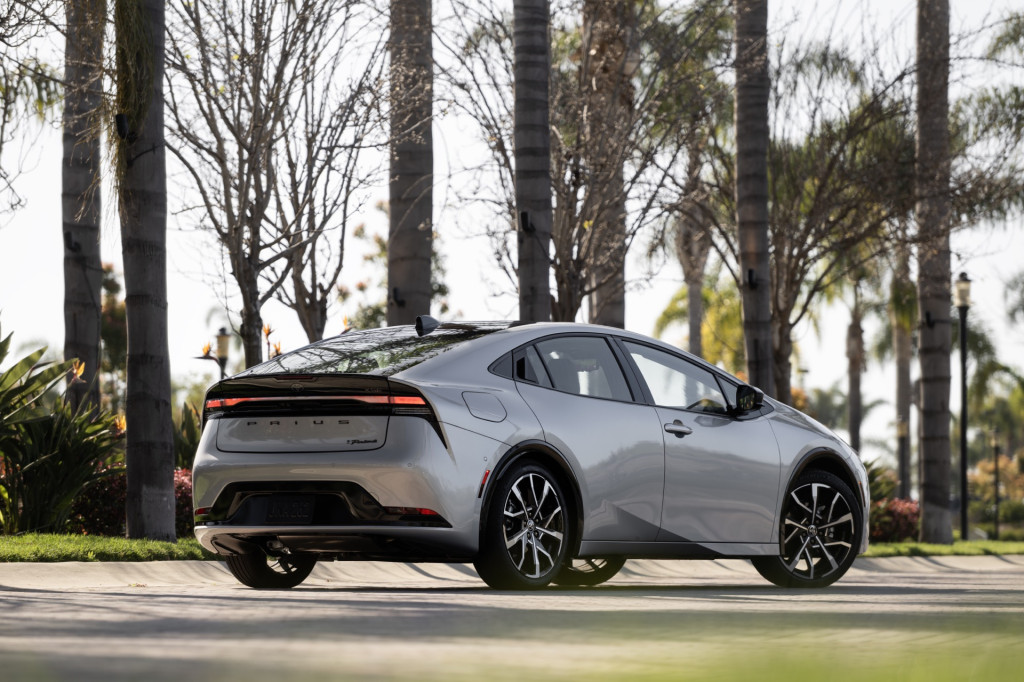
2023 Toyota Prius Prime
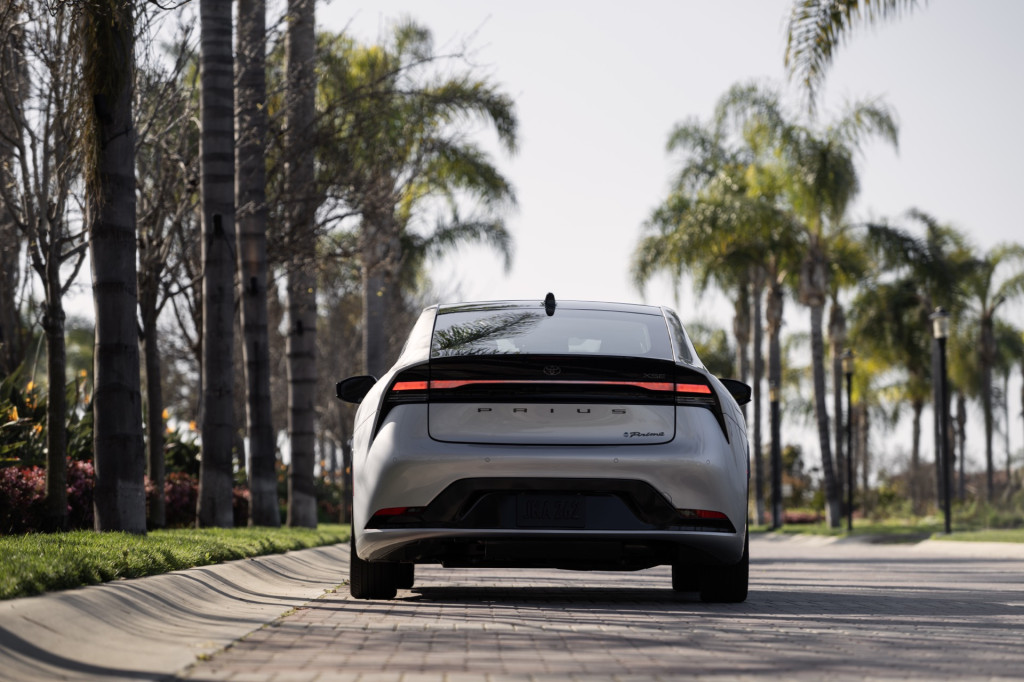
2023 Toyota Prius Prime
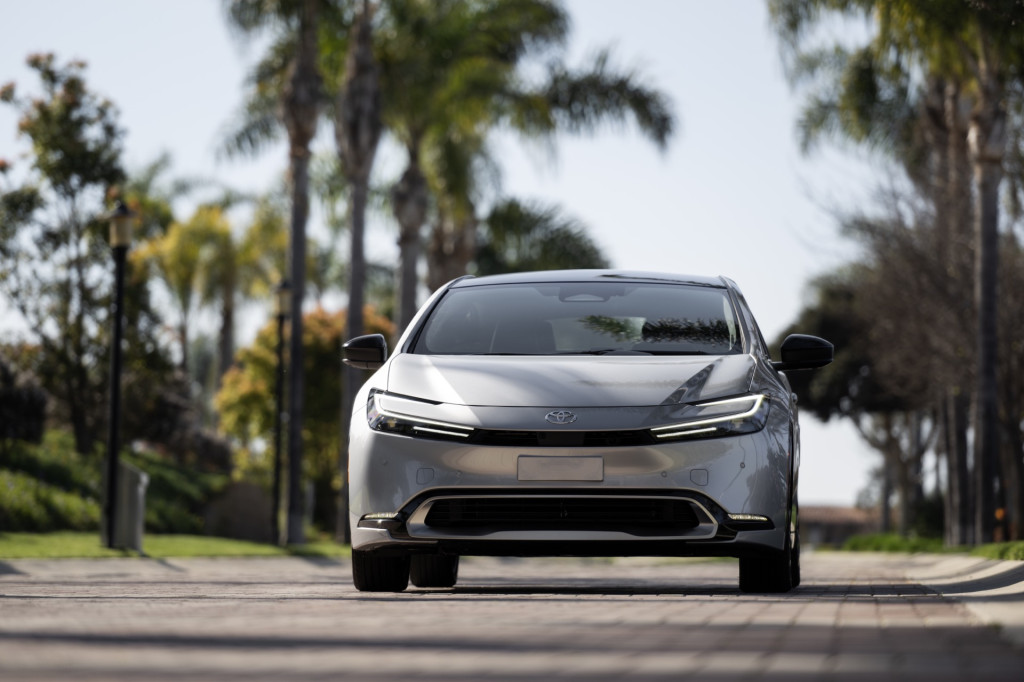
2023 Toyota Prius Prime
Unfortunately, regenerative braking felt no more crisp than that of the regular Prius hybrid, despite the much larger pack. Only on downhill stretches did regen noticeably increase, as the car kept itself to a set speed. But despite the all-electric nature of the Prime in EV mode, there was nothing approximating heavy regen, let alone one-pedal driving.
Notwithstanding that, the larger pack will accumulate significantly more charge traveling downhill than the conventional hybrids. We actually gained 10 percent of battery range, or roughly 4 miles of all-electric running, during several downhill miles of the drive route.
A jarring transition to gas
Overall the 2023 Prius Prime drives pretty much like a regular car in electric mode. That’s admirable. But it made the transition to engine-hybrid power more jarring after the 30-plus miles we covered solely on battery power.
In hybrid mode, the Prius Prime is comfortably quiet puttering around town. Engine noise is remote, up there in the nose somewhere. If it flips on at steady speed when the battery depletes, it’s not noticeable. Accelerate onto a short uphill on-ramp, however, and it gets loud quickly—though neither as thrashy nor as desperate-sounding as previous generations.

2023 Toyota Prius Prime
But, especially after silent EV running with only some whine from the powertrain, that engine roar was particularly jarring. It took about 10 miles to acclimatize, as memories of smooth, quiet electric-only propulsion faded away.
Our two Prius Primes each showed a cumulative average of 3.1 miles per kwh, though we had no visibility into the previous drive cycles those miles covered. And we appreciated the Hill Hold feature that kept the brakes engaged after a stop—though we found it frustrating that it had to be re-engaged after each power cycle.
Does the new Prius shape affect cabin comfort?
The fifth-generation Prius remains a striking, good-looking car, one for which its project team deliberately sacrificed a few points of aerodynamic drag—and, perhaps, some practicality—to get the compelling shape right. Toyota’s marketers are taking full advantage of the new and unexpected comeliness, with ads taglined, “Prius: It’s a Looker Now” and “Prius: It’s Rebellious Now.”

2023 Toyota Prius Prime
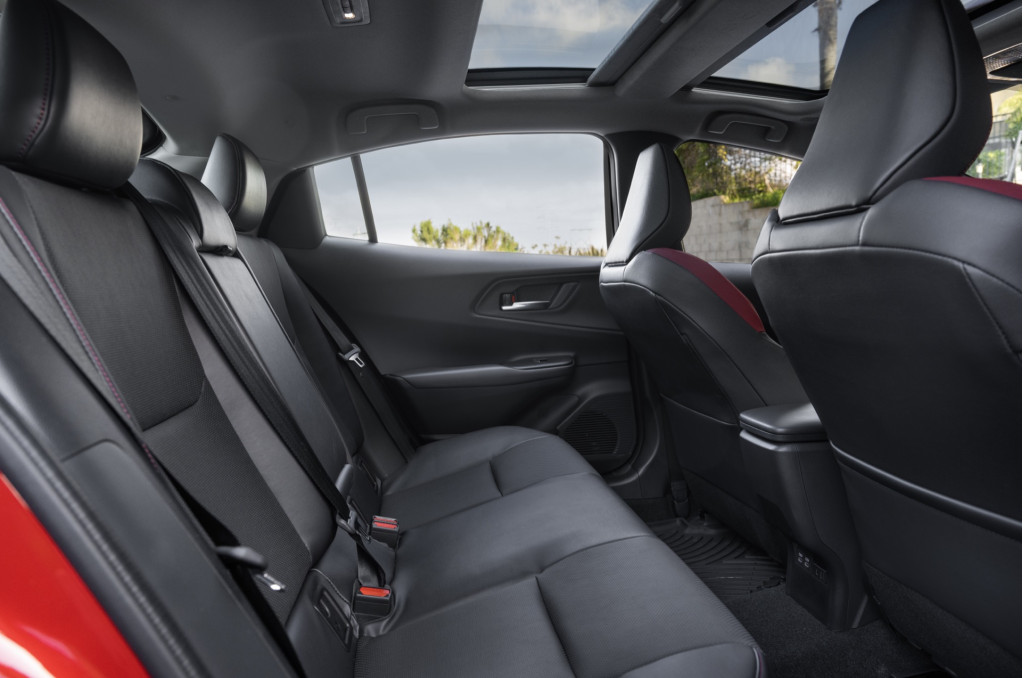
2023 Toyota Prius Prime
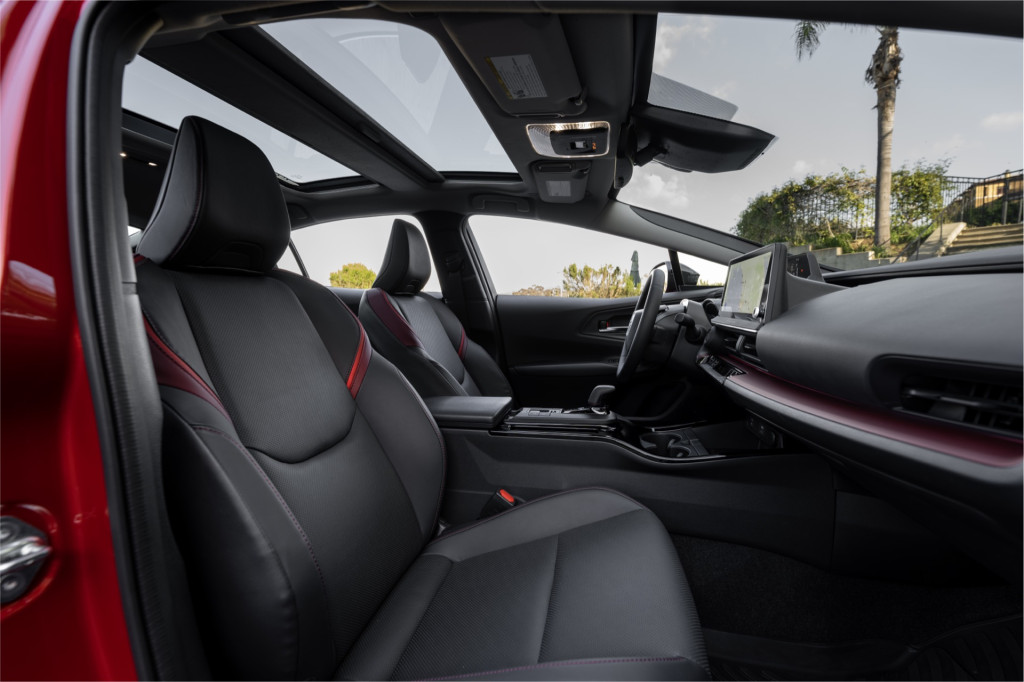
2023 Toyota Prius Prime
We’re not sure about actual rebellion, but its steeply raked windshield—at a 21.6-degree angle—still requires a hand on the pillar and a duck-and-twist motion to drop into the driver’s seat without banging your head. Inside, passengers sit low, and several drivers complained about the difficulty of finding adjustments for the seat and steering wheel that let them view the instrument cluster—at the base of the windshield—without the wheel rubbing against their legs.
Powertrain aside, virtually every comment we made in our first drive report on the conventional 2023 Prius hybrid applies to the Prime. You’ll miss it in a parking lot unless you happen to see it plugged in.
Will owners plug them in? Toyota had no data on the previous plug-in to share, though (as before) it promised to investigate the question.
Prius Prime vs. used Volt?
So, back to that Chevy Volt. More than seven years after GM launched its second-generation plug-in hybrid hatchback—and four years after it was killed off—has Toyota built a better Volt?
In range, the answer is no. The Volt was EPA-rated at 53 miles when it departed; all but the base Prius Prime come in 27 percent below that. Moreover, the Volt stayed fully electric even under foot-to-the-floor acceleration if its battery pack was charged; the Prius Prime will kick on its engine under those circumstances.
In looks, we have to say Prius wins. The second-generation Volt was racy and attractive, but the 2023 Prius Prime still gets the nod for being simply a jaw-dropping shape, one looked at and commented on far and wide during our tests.
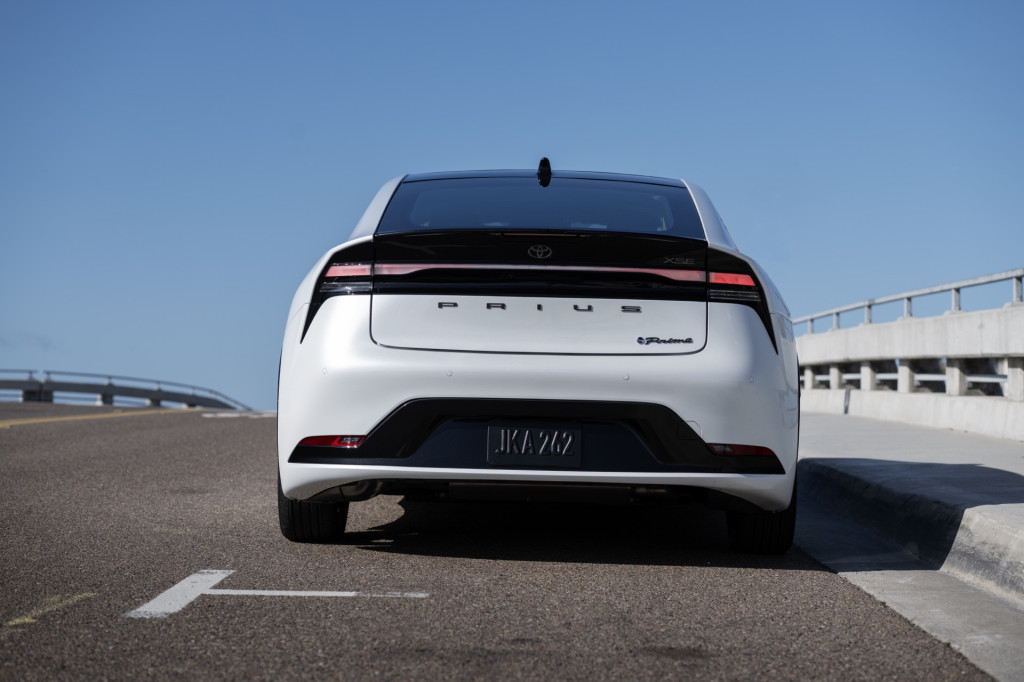
2023 Toyota Prius Prime
Will Volt owners looking to replace their six-year-old cars find the Prius Prime a compelling entry? Maybe. But fully a decade after Toyota’s first Prius with a plug, we can’t help feeling the company still doesn’t really want to be doing EVs. While it has committed $35 billion to battery-electric vehicles by 2030—the same amount as General Motors—its first EV entry, the underwhelming bZ4X compact SUV, hardly makes the case Toyota can design compelling EVs.
After turning in our Prius Prime, a final thought occurred: As a battery-electric model, a Prius Prime EV would have been a far better vehicle than the bZ4X. It would have had more range, and its visual appeal would have attracted a new set of buyers eager to have an EV—and kept the Prius name relevant.
As it is, the 2023 Toyota Prius Prime is a good plug-in hybrid. But with less range and less performance than the Volt of seven years ago, it’s not a great plug-in hybrid.
Toyota provided airfare, lodging, and meals to enable Green Car Reports to bring you this first-person drive report.

